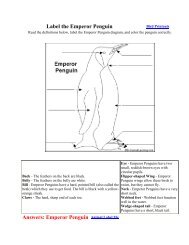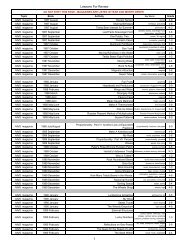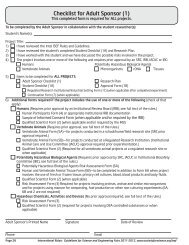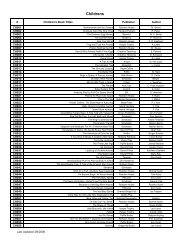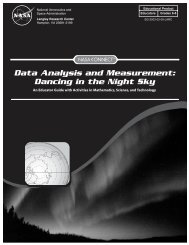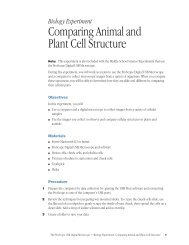BIOGRAPHY OF A RIVER
BIOGRAPHY OF A RIVER
BIOGRAPHY OF A RIVER
Create successful ePaper yourself
Turn your PDF publications into a flip-book with our unique Google optimized e-Paper software.
protozoa: mostly microscopic animals made up of a single cell or a group of more or less identicalcells. Protozoa live chiefly in water, but many are parasitic.virus: any of a group of ultramicroscopic or submicroscopic infectious agents that cause various diseasesin animals, such as measles and mumps, or in plants, such as mosaic disease. Viruses are capableof multiplying only in connection with living cells.ADVANCE PREPARATIONA. Prepare gelatin according to directions and pour approximately two tablespoons into eachpetri dish. Cover with the lids. Let cool overnight.B. Collect water samples from three sources. (One may be tap water. Others may be from localponds, rivers, streams, drainage ditches.)PROCEDUREI. Setting the stageA. Discuss Background Information with students.B. Define terms and discuss what students know about these organisms.II.ActivityA. Have students divide petri dish into four equal sections using a marker on theoutside bottom part of the dish. (Be sure they keep the lids on.) Then dip a cottonswab in a sample of water, rub the cotton swab over gelatin in one marked section of the petridish, and cover it with the lid. Repeat with the other two samples using a clean cotton swabeach time and making sure that a new section is used each time. Do not allow water to run fromone section to another. Incubate upside down at room temperature.B. At the next class period, ask students to observe the three areas for colonygrowth. These will appear as circular spots on the gelatin. (The fourth section is acontrol.)C. Have students discuss the rate of growth of the colonies. Explain that the dish3-52




